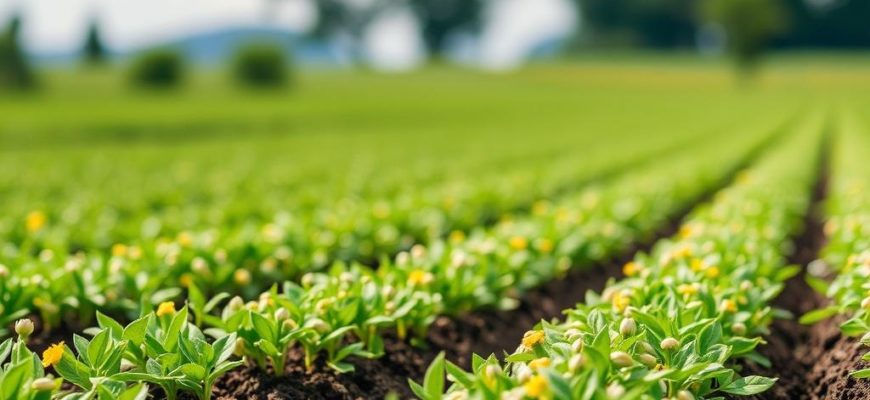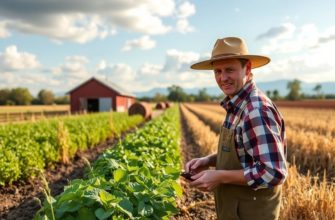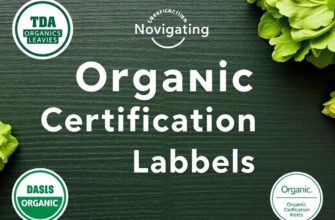Международное название:
Синонимы:
Характеристики:
| Сложность: | |
| Цикл развития: | |
| Световой режим: | |
| Режим полива: | |
| Температура: | |
| Почва: | |
| Ключевая черта: |
Цвет листвы
Цвет бутонов
Размеры цветка
Систематика:
| Домен: | |
| Царство: | |
| Отдел: | |
| Класс: | |
| Порядок: | |
| Семейство: | |
| Род: |
Choosing the right seed is one of those deceptively small decisions that can ripple through an entire farming enterprise. Whether you’re an experienced grower managing hundreds of acres or a new market gardener nurturing your first raised beds, seed selection and planting strategies determine not only what ends up on the dinner table but also your bottom line, your exposure to risk, and your environmental footprint. In this article we’ll walk through the economic logic behind seed selection, unpack the trade-offs growers face, and offer practical tools and examples that help translate agricultural theory into everyday decisions. If you’ve ever wondered why some farmers swear by hybrids, why others save seed, or how genotype, market demand, and planting techniques interact to shape profit, keep reading—this is where those threads come together.
- Why seed choice matters economically
- Fundamental economic concepts applied to seed selection
- Expected value and variance
- Marginal analysis
- Opportunity cost
- Risk aversion and portfolio diversification
- Key factors to weigh when selecting seed
- Yield potential vs. realized yield
- Seed price and seed cost per unit of production
- Time to maturity and planting window
- Pest, disease and abiotic stress tolerance
- Seed quality and germination rates
- Market preferences and quality attributes
- Intellectual property and licensing
- Seed types and their economic implications
- Open-pollinated varieties
- Hybrid varieties
- GM and trait-enhanced seeds
- Seed treatments
- Understanding seeding rate economics
- Planting methods and timing: costs, labor, and returns
- Direct seeding vs. transplanting
- Sowing depth and row spacing
- Planting date and seasonality
- Seed quality metrics and testing
- Supply chains, markets, and pricing
- Policy, subsidies, and public breeding programs
- Environmental and social externalities
- Technology and innovation shaping seed economics
- Case studies: how seed decisions affect farm economics
- Case study 1: A small grain farmer choosing between hybrid and open-pollinated wheat
- Case study 2: Vegetable market gardener using transplants
- Practical decision-making framework for growers
- Simple budgeting table: comparing two seed choices
- Risk management and insurance considerations
- On-farm trials and adaptive management
- Social value and community considerations
- Common pitfalls and how to avoid them
- Focusing only on seed price
- Ignoring seeding rate interactions
- Overlooking market requirements
- Underestimating labor timing
- Not planning for seed supply continuity
- Future trends farmers should watch
- Checklist for making the seed selection decision
- Practical example: planning a seed budget for a season
- Final notes on sustainability and long-term strategy
- Conclusion
Why seed choice matters economically
The seed is the first cost item in any cropping enterprise, but it’s also the first lever you can pull to influence yield, quality, and risk. On the surface, seed cost is straightforward: you pay per pound, per bag, or per unit seed. But the true economic impact of seed choice emerges in how that seed interacts with the farm’s soils, climate, labor structure, pest and disease environment, and market channels. A cheaper seed variety that yields poorly, requires more pesticides, or misses the optimal harvest window can be far more expensive in practice than a pricier seed that matures reliably and commands a premium price.
Beyond direct costs, seed choice affects input requirements (fertilizer, crop protection), labor scheduling and intensity (e.g., varieties that need more hand thinning or monitoring), storage and handling logistics, and downstream processing needs. When you think like an economist, seed selection is a portfolio decision: you allocate limited resources (land, labor, capital) among varieties and planting strategies to maximize expected returns while managing risk.
Fundamental economic concepts applied to seed selection
Expected value and variance
A core idea is expected value: the average return you anticipate from planting a particular seed variety under the known conditions of your farm. But profitability isn’t just about the average; it’s also about variance — how much that return fluctuates year to year. Many farmers prefer slightly lower expected yields for much lower variance (predictability). For instance, a drought-tolerant variety may yield less in a wet year but perform much better in dry years, reducing income volatility.
Marginal analysis
Marginal analysis asks: does buying more of a particular seed or switching to an upgraded variety increase profit? You weigh the additional cost of the seed against the additional revenue from higher yield or quality, minus any extra variable costs the variety brings (like more fertilizer or labor).
Opportunity cost
When you choose one seed, you forgo other crop options for that land and season. The opportunity cost includes lost revenue from not planting an alternative with higher market value, potentially different planting dates, or shorter growing seasons that allow double cropping.
Risk aversion and portfolio diversification
Growers differ in their tolerance for risk. Those averse to risk may diversify plantings across multiple varieties, planting dates, or crops to smooth income streams. This diversification reduces the probability of catastrophic loss from a single pest outbreak, weather event, or market shock.
Key factors to weigh when selecting seed
Yield potential vs. realized yield
Yield potential listed in trials is an important guide, but what matters is realized yield on your farm. Trials often run under ideal conditions; your soil type, microclimate, and management style will determine actual performance. Keep accurate field records to compare how varieties perform under your specific conditions.
Seed price and seed cost per unit of production
Compare seed prices in the context of seeding rates and expected yields. A variety that costs more per pound may require a smaller seeding rate, or may produce higher quality that sells at a premium. Convert seed price into cost per expected bushel or kilogram to compare apples to apples.
Time to maturity and planting window
Varieties with different maturity dates allow you to stagger planting and harvest to spread labor needs, reduce peak harvest pressure, or fit into crop rotations. Early-maturing varieties may fetch higher prices in some markets and enable double cropping in suitable climates.
Pest, disease and abiotic stress tolerance
Resistant or tolerant varieties reduce the need for pesticides and other interventions, lowering cost and environmental impact. Varieties that tolerate drought, salinity, or heat can stabilize returns under climate variability.
Seed quality and germination rates
Higher-quality seed with high germination rates reduces replanting and uneven stands. Poor germination increases labor and can reduce final yields. Buy from reputable suppliers and, when possible, test germination before planting large areas.
Market preferences and quality attributes
Markets often pay premiums for quality attributes: grain protein, oil content, taste, color, shelf life, or uniformity. Consider whether investing in a premium variety makes sense given your market channel—local markets, processors, or specialty buyers may reward certain traits.
Intellectual property and licensing
Some seeds are protected by plant variety protection, patents, or licensing agreements. Hybrids and GMO seeds may come with restrictions on seed saving. Factor the legal and long-term cost implications into your decision.
Seed types and their economic implications
Open-pollinated varieties
Open-pollinated (OP) varieties can often be saved and replanted by farmers. This reduces seed purchase costs over time and supports on-farm adaptation. The trade-off can be lower uniformity or yield compared to modern hybrids, and greater vulnerability to certain diseases if selection is not practiced.
Hybrid varieties
Hybrid seeds often deliver higher yields and uniformity because they capitalize on heterosis (hybrid vigor). However, seed must be purchased every season, which raises annual seed expenditure. Hybrids can be economically superior when the yield premium covers the seed cost and any additional management needs.
GM and trait-enhanced seeds
Genetically modified (GM) or trait-enhanced seeds can offer pest resistance, herbicide tolerance, or stress resilience. These traits can lower input costs or boost yields but may carry market access considerations (e.g., export markets that restrict GM content) and higher seed prices.
Seed treatments
Treatments like fungicides, insecticides, or biological coatings improve early stand establishment and reduce seedling loss—effectively an insurance policy. Treated seed costs more up-front but can reduce replanting risk and early-season losses.
Understanding seeding rate economics
Seeding rate is an adjustable management lever with direct cost and yield implications. Too low a rate can result in poor ground coverage, weed competition, and lower yields. Too high a rate increases seed cost, fosters intraspecific competition, and can elevate disease risk.
A marginal approach helps: calculate the additional revenue from increasing seeding rate by one unit and compare it to the additional seed cost. Consider also how seeding rates interact with seed size, germination, and expected plant survival rate.
Planting methods and timing: costs, labor, and returns
Direct seeding vs. transplanting
Direct seeding is generally cheaper and faster for large operations, while transplanting often yields earlier and more uniform stands that can command higher prices or higher yields. Nursery labor, greenhouse space, and transplanting operations add cost but can be feasible when the market price or yield premium justifies it.
Sowing depth and row spacing
Optimizing sowing depth and row spacing influences seedling emergence, resource capture, and harvest efficiency. Wider rows can simplify mechanical cultivation and reduce labor, while narrow rows maximize light capture and yield for some crops. Make empirical trials to find the best spacing for your system.
Planting date and seasonality
Planting too early or late exposes crops to frost, heat stress, or unfavorable pest pressure. Planting dates are strategic: they affect risk, market timing, and the ability to double-crop. Align planting with weather patterns, market windows, and labor availability.
Seed quality metrics and testing
Before committing to a large purchase, evaluate seed quality based on:
- Germination rate (percentage)
- Purity and physical cleanliness
- Moisture content and storability
- Seed health tests (pathogens present)
- Genetic identity and uniformity
Testing can save money by avoiding purchases of substandard seed. Many agricultural extension services offer seed testing, or you can do small-scale germination tests at the farm level.
Supply chains, markets, and pricing
Seed markets vary from global commodity supply chains to local heirloom networks. Larger commercial seed companies invest heavily in breeding and provide consistent genetics, packaging, and support services. Local seed suppliers and community seed banks prioritize adaptation to local conditions and seed sovereignty.
Price dynamics for seed depend on research and development costs, intellectual property, production costs, and scale. Hybrids and trait-protected seeds usually cost more because of the R&D and licensing behind them. Consider purchasing strategies like early-bird contracts, volume discounts, or cooperative buying groups to manage price risk.
Policy, subsidies, and public breeding programs
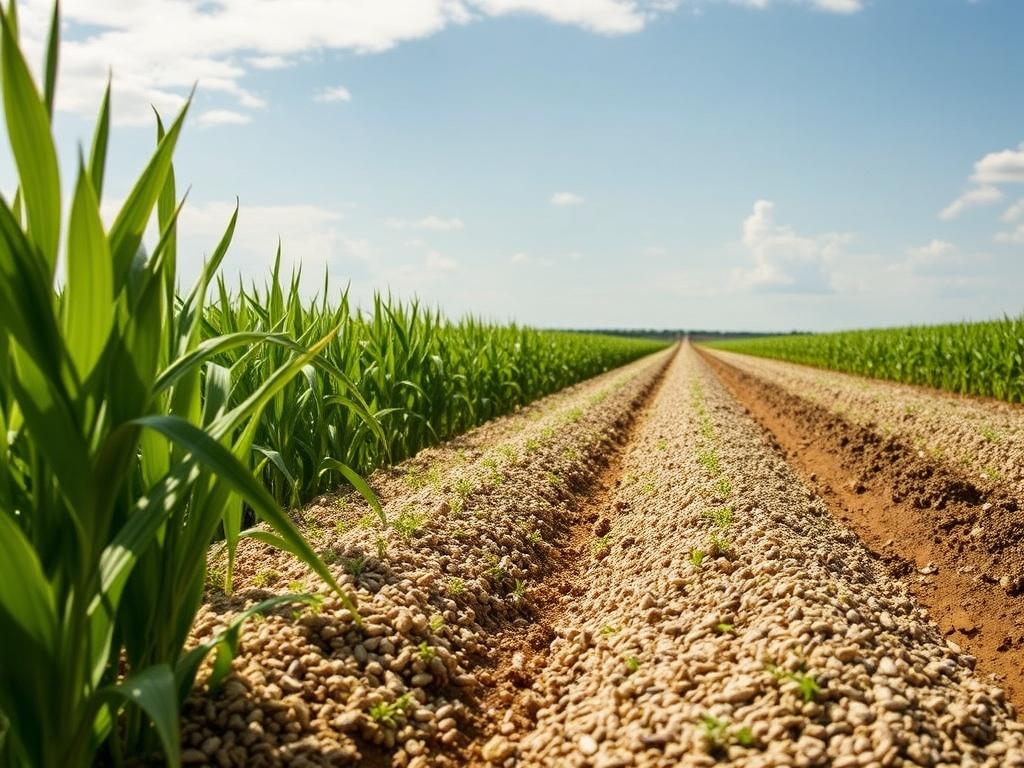
Public investment in plant breeding and seed systems affects the economic landscape. In many regions, public research institutions develop open varieties that are free from licensing constraints, supporting accessibility for smallholder farmers. Subsidies for seed purchases, insurance programs, and disaster relief also change the economics of seed selection by lowering the effective price or reducing downside risk.
Stay informed about local programs—participation can substantially shift the cost-benefit calculation for certain seed choices.
Environmental and social externalities
Seed choices have consequences beyond the farm gate. Using disease-resistant varieties can reduce pesticide use, improving environmental quality and potentially reducing costs. Conversely, varieties that require heavy chemical inputs impose externalities on neighbors and ecosystems.
Socially, seed saving and community seed systems preserve cultural preferences and genetic diversity. Choosing seeds that align with local culinary traditions can strengthen local markets and social ties. Accounting for these externalities in your decision-making may mean valuing non-monetary benefits like biodiversity, cultural preservation, and long-term resilience.
Technology and innovation shaping seed economics
Modern breeding tools (marker-assisted selection, genomic selection) and technologies like precision planting, variable-rate seeding, and decision-support apps are reshaping how seed choices pay off.
- Precision seeding reduces seed wastage and optimizes plant populations across varied fields.
- Genomic predictions accelerate breeding cycles and make tailored varieties more available.
- Remote sensing and soil sensors inform micro-variations in seed selection and seeding rate.
These technologies often require capital investment and technical know-how but can unlock substantial efficiency gains and reduce risk.
Case studies: how seed decisions affect farm economics
Case study 1: A small grain farmer choosing between hybrid and open-pollinated wheat
A 200-hectare wheat operation compares a hybrid that costs 25% more per hectare in seed but promises a 10% higher yield and improved disease resistance. The farmer evaluates:
- Additional seed cost vs. extra grain revenue based on current market price
- Lower expected fungicide use given disease resistance
- Restrictions on seed saving and long-term annual seed expense
By calculating net present value over a multi-year horizon and factoring in price volatility, the farmer chooses the hybrid for higher immediate profitability and stability, while keeping a portion of the land planted with open-pollinated varieties to maintain on-farm seed-saving capacity.
Case study 2: Vegetable market gardener using transplants
A small-scale organic grower sells premium salad greens and peppers. Transplanting costs more upfront because of nursery labor and greenhouse heating but results in earlier harvests and higher quality. The grower captures higher early-season prices and avoids direct seeding losses to cool soils and pests, making transplants the economically sensible choice despite higher input costs.
Practical decision-making framework for growers
When faced with a seed selection decision, use this step-by-step approach:
- Define objectives (profit, risk reduction, labor smoothing, environmental goals).
- Gather data: historical yields, soil tests, pest/disease history, market price projections.
- Estimate expected yield and quality for candidate varieties under your conditions.
- Calculate all costs: seed, seed treatments, planting labor, additional inputs required.
- Model expected revenue and risk (range of outcomes), including sensitivity to price and yield shocks.
- Consider non-monetary values (biodiversity, community preferences, regulation compliance).
- Make a decision and plan a small-scale trial if unsure—record results and iterate.
This process encourages evidence-based selection and continuous learning.
Simple budgeting table: comparing two seed choices
Below is a simplified example comparing two seed options for a hypothetical crop on one hectare. Use your actual data for precise calculations.
| Item | Variety A (Open-pollinated) | Variety B (Hybrid) |
|---|---|---|
| Seed cost per ha | $40 | $70 |
| Expected yield (kg/ha) | 3,000 | 3,300 |
| Price received ($/kg) | $0.50 | $0.50 |
| Other variable costs (fertilizer, pesticides) per ha | $200 | $170 |
| Gross revenue | $1,500 | $1,650 |
| Total variable costs | $240 | $240 |
| Net margin per ha | $1,260 | $1,410 |
In this simplified example, Variety B yields a higher net margin despite higher seed cost because of its yield advantage and lower input needs. Real-world calculations should include risk scenarios, labor timing impacts, and potential premiums for quality.
Risk management and insurance considerations
No seed choice eliminates risk entirely. Here are practical strategies:
- Diversify varieties and crops to reduce correlated risk.
- Use seed treatments and resistant varieties to lower biotic risk.
- Consider crop insurance where available to buffer extreme losses.
- Adopt staggered planting dates and buffer stocks to manage market price risk.
- Maintain good record-keeping to identify underperforming varieties quickly.
Combine these with financial planning—reserving contingency funds or using forward contracts can help manage cash flow when yields fluctuate.
On-farm trials and adaptive management
Scaling a new seed choice across all acreage is rarely wise without piloting. On-farm trials let you observe:
- How a variety performs on your specific soils and microclimates
- Interactions with your fertility program and pest pressures
- Harvest timing and labor implications
- Market acceptance and quality attributes
Design trials with replication and good record-keeping. Even simple side-by-side plots can reveal critical differences and save money in the long run.
Social value and community considerations

Seed choices affect communities. Supporting local seed systems can strengthen food security and cultural heritage, but market demands and scalability sometimes push growers toward commercial hybrid or trait-protected seeds. Reflect on who benefits from your choices: are you supporting local seed keepers? Do your choices prioritize resilience for smallholders or maximize short-term profit? Balancing social, environmental, and economic goals is part of sustainable seed economics.
Common pitfalls and how to avoid them
Focusing only on seed price
Buying the cheapest seed without accounting for germination, vigor, or suitability to your environment can lead to losses greater than the initial savings.
Ignoring seeding rate interactions
Failing to adjust seeding rate when switching varieties can waste seed or leave stands too sparse.
Overlooking market requirements
Some buyers demand specific varieties or quality metrics. Selling off-spec product can lower realized prices substantially.
Underestimating labor timing
Variety choices that force peak labor demands into a short window can increase labor cost or lead to missed harvests and quality loss.
Not planning for seed supply continuity
Relying on a single proprietary seed source may be risky if supply chains break or licensing terms change. Maintain contingency plans.
Future trends farmers should watch
– Increasing availability of site-specific varieties driven by genomic and breeding innovations.
– Growth in digital marketplaces and traceability requirements that link seed genetics to consumer demand.
– Expansion of climate-resilient breeding programs focusing on drought, heat, and flooding tolerance.
– Shifts in policy toward supporting public breeding for climate adaptation and smallholder access.
These trends will shape seed pricing, availability, and the value of particular traits over the next decade.
Checklist for making the seed selection decision
- Do I understand how each candidate variety performs under my soil and climate?
- Have I converted seed costs into cost per expected unit of production?
- What are the labor and timing implications of changing varieties?
- How will this choice affect my pest and disease management plan?
- Are there market constraints or premiums tied to variety or quality?
- Can I trial the variety at meaningful scale before full adoption?
- Does this choice align with my long-term farm strategy and risk tolerance?
Use this checklist before purchasing to avoid common mistakes and ensure decisions align with both short-term realities and long-term goals.
Practical example: planning a seed budget for a season
A simple seasonal planning table helps align seed purchases with cash flow and planting schedules.
| Month | Planned purchases | Estimated cost | Planting window |
|---|---|---|---|
| January | Order hybrid corn seed | $2,400 | April–May |
| March | Order legume seed for cover crop | $250 | September |
| April | Buy treated vegetable seed for transplants | $600 | May–June |
| Total | – | $3,250 | – |
Planning purchases against cash flow ensures seed is available when needed and helps take advantage of early-order discounts.
Final notes on sustainability and long-term strategy
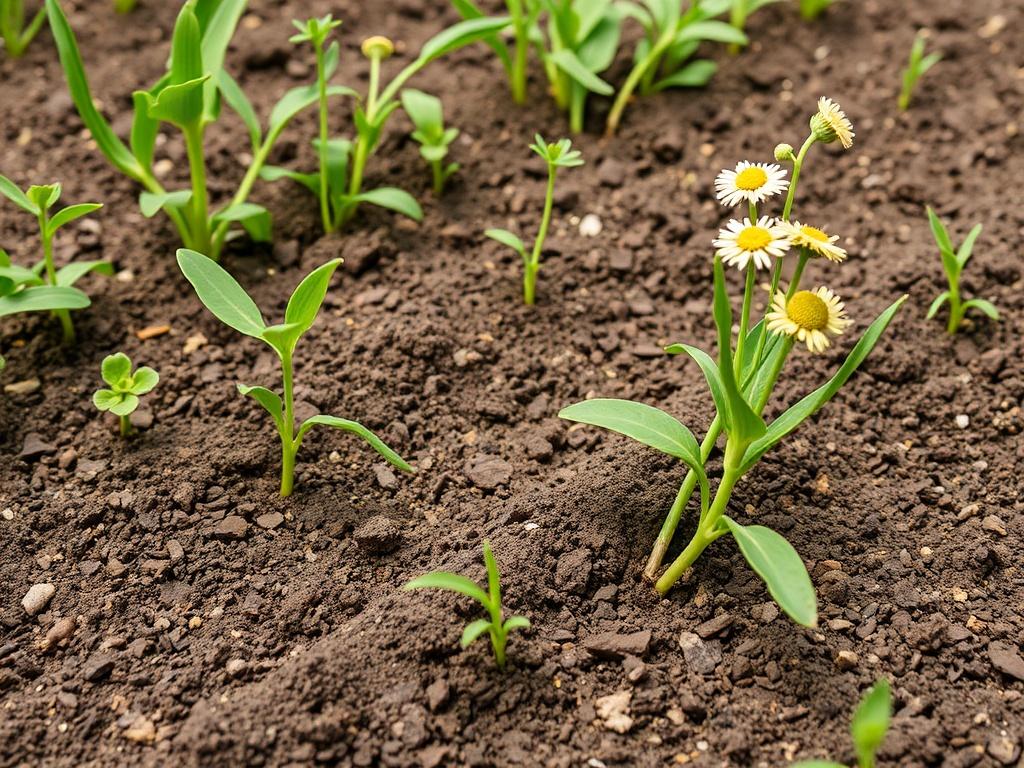
Smart seed choices should be part of a larger farm strategy that balances profitability, resilience, and sustainability. Investing in varieties that reduce chemical inputs, improve soil health through compatible rotations, or align with local markets can deliver both economic and ecological returns over time. On-farm breeding and seed saving remain powerful tools for adaptation, especially for small-scale and resource-limited growers. Conversely, commercial hybrids and trait-enhanced seeds have a role in boosting productivity and stability when their higher costs are offset by yield or quality gains.
Conclusion
Seed selection and planting are more than technical tasks; they are strategic investments that shape the farm’s risk profile, profitability, and contribution to landscapes and communities. By thinking economically—comparing costs to realistic returns, accounting for risk and labor, piloting changes, and aligning choices with markets and long-term goals—growers can make seed decisions that reliably enhance both income and resilience.
Оценивайте статью, делитесь материалом с друзьями в социальных сетях, а также высказывайте свое мнение в обсуждении ниже! ![]()
